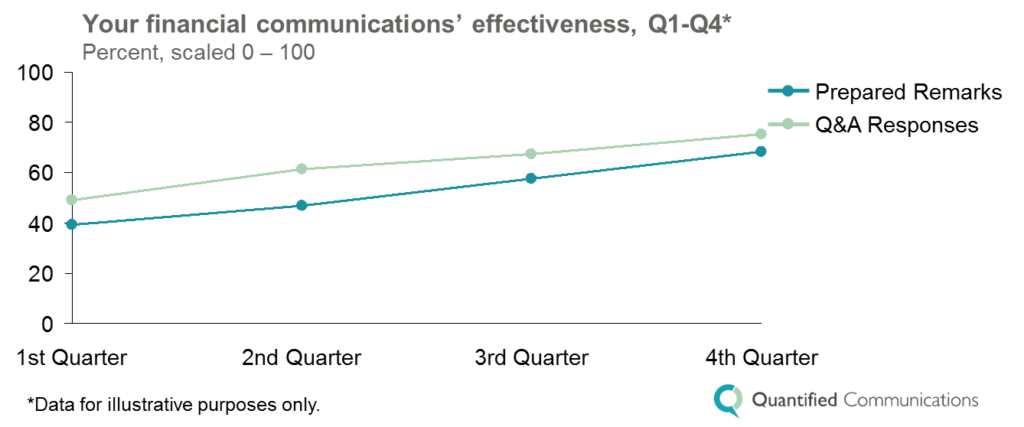How data can help investor relations teams improve communication

Arguably more than any other department, a company’s investor relations team is constantly dealing with data. From annual revenue, to quarterly guidance, to progress against key initiatives, numbers are the name of the investor relations game.
But, as important as the numbers are, the way the investor relations team communicates those numbers — through earnings calls, shareholder letters, or investor days — is just as critical in earning investors’ trust and maintaining (or improving) the company’s public perception.
With such high stakes at play, it stands to reason that an investor relations team — already so dependent upon numbers — would jump at the chance to use data to measure and enhance the effectiveness of their company’s financial communications.
The good news is, advances in data science technology have paved the way for investor relations teams to work with communications analysts to quickly and efficiently compare their financial communications to their competitors and peers, identifying strengths and finding out exactly what they can do to ensure their communications have the best possible impact on investors and shareholders.
How can investor relations teams use this data?
Evaluate
First, and most simply, investor relations teams can now see—in quantified form—just how effectively their financial communications are likely to be in earning investor trust. Which key themes are most salient in your messaging? How clearly is your company communicating its primary initiatives? Is the CEO as confident during the Q&A section of an earnings call as the prepared remarks?
A data-driven content analysis eliminates the uncertainty of a subjective review, allowing investor relations teams to feel perfectly confident in the quality of their communications.
Benchmark
But every investor relations team knows their communications aren’t the only ones investors are tracking. Regardless of financial positioning, one way for a company to gain a competitive edge is by communicating in a more clear, confident, and trustworthy manner than its competition.
Data-driven communication analysis can help investor relation teams ensure that competitive edge by benchmarking their financial communications against similar communications from direct competitors, S&P 500 companies, and best-in-class financial communicators. And these data-driven comparisons can be made much more objectively and efficiently than ever before.
Track
Finally, it’s important to keep in mind that no single communication exists in a vacuum. The data-driven approach to financial communication analysis allows investor relations teams to see, at a glance, how their communications have improved over time.

Even better, we can track this improvement at various levels, from overall effectiveness, to progress in prepared remarks vs. Q&A over time, to how effectively a company has responded to one particular analyst or investor over the past several engagements.
To learn more about how Quantified Communications can use content analysis to help your investor relations team improve your organization’s financial communication strategy, contact us at info@quantifiedcommunications.com.
More on financial communication measurement and data-driven investor relations from Quantified Communications.